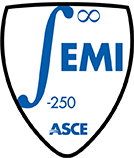Exploiting Buckling of Slender Structures toward Smart Materials, Systems, and Devices
The Ohio State University
Problems
Advanced structural design is a pressing necessity as we entered a new era of increased demands on products with versatility like the Swiss Army knife that can handle multiple tasks. This implies that the future of structural design is to discover new classes of geometric forms whose properties can be tailored for improved performance and multi-functional features. In fact, the community of applied mechanics is experiencing a paradigm shift over the last decade in terms of rekindling the popularity of the study of mechanical instabilities such as buckling. The growing body of research explores buckling-induced large deformations as positive phenomena. Researchers from various disciplines have formed an active branch (coined "extreme mechanics") and harnessed the buckling of slender elements to design new classes of structures, systems, and materials with unprecedented properties and functions.
Approach
The newly-established Versatile Structures Lab at Ohio State University is motivated to push the boundaries of the emerging extreme mechanics movement by exploiting geometric forms and their mechanical performance with the aim of developing innovative materials, devices, and systems at various length scales. In our review paper, we highlighted recent advances in buckling-induced smart applications and identified research gaps in this exciting research direction. Thus, our lab is dedicated to define a future frontier of structural engineering by demonstrating how this discipline can go beyond the traditional task of designing large-scale structures and move into a holistic interdisciplinary platform.
Findings
Motivated by increasing interests in harnessing buckling toward the design of smart devices and mechanical systems, our previous studies have shown how to use elastic buckling response of slender structures (such as strips and cylinders) as favorable and how to control the postbuckling response beyond the critical buckling load. More specifically, new forms of cylindrical shells were proposed with a new focus on energy harvesting and smart sensing. It was shown that the post-buckling behavior could be controlled through the appropriate selection of geometry, material, and boundary conditions. In addition, we have demonstrated examples of the harnessing of buckling at different length scales and for different purposes. One example is the development of a microactuator with tunable multistability. We explored a Si/Cr micro claw that can exhibit multistable behavior, like the flytrap, due to nonlinear edge effects. Another example is related to the kirigami-based, highly stretchable strain sensor. We found that piezoelectric thin films based on kirigami (a type of origami that allows cutting) can achieve higher stretchability than traditional thin films for the same output voltage, which can lead to new routes in the development of novel energy harvesters and sensing devices.
Impact
Our lab is dedicated to provide a vision on using buckling and other type of mechanical instabilities towards the development of resilient macro-scale devices against natural hazards, novel reconfigurable structural elements, and advanced materials for sustainable civil infrastructure. In addition, we are motivated to contribute the value of civil engineering education through teaching activities as well as outreach programs using the cutting-edge research efforts under the topic of structural stability.
Core competencies
- Design of Tailorable Materials and Structures via Interdisciplinary Approach
- Characterize the developed concepts through prototyping, analyses, experiments, and simulations
- Develop sustainable and resilient structural solutions in a variety of length scales
Current research team members
- Chunping Ma (PhD student)
- Amal Jerald Joseph M (MS Student)
- Brady Hildebrand (MS Student)
- Yan Long (MS Student)


